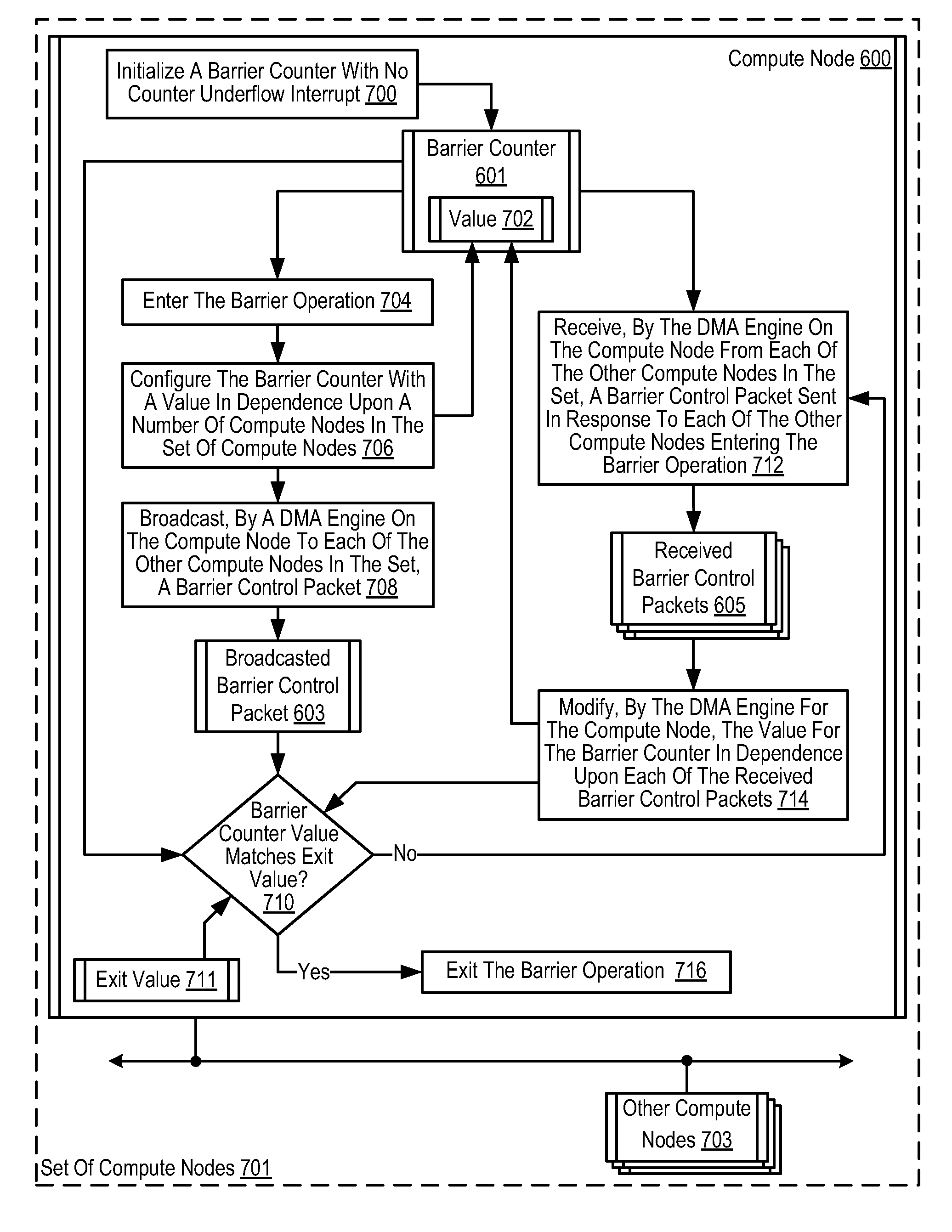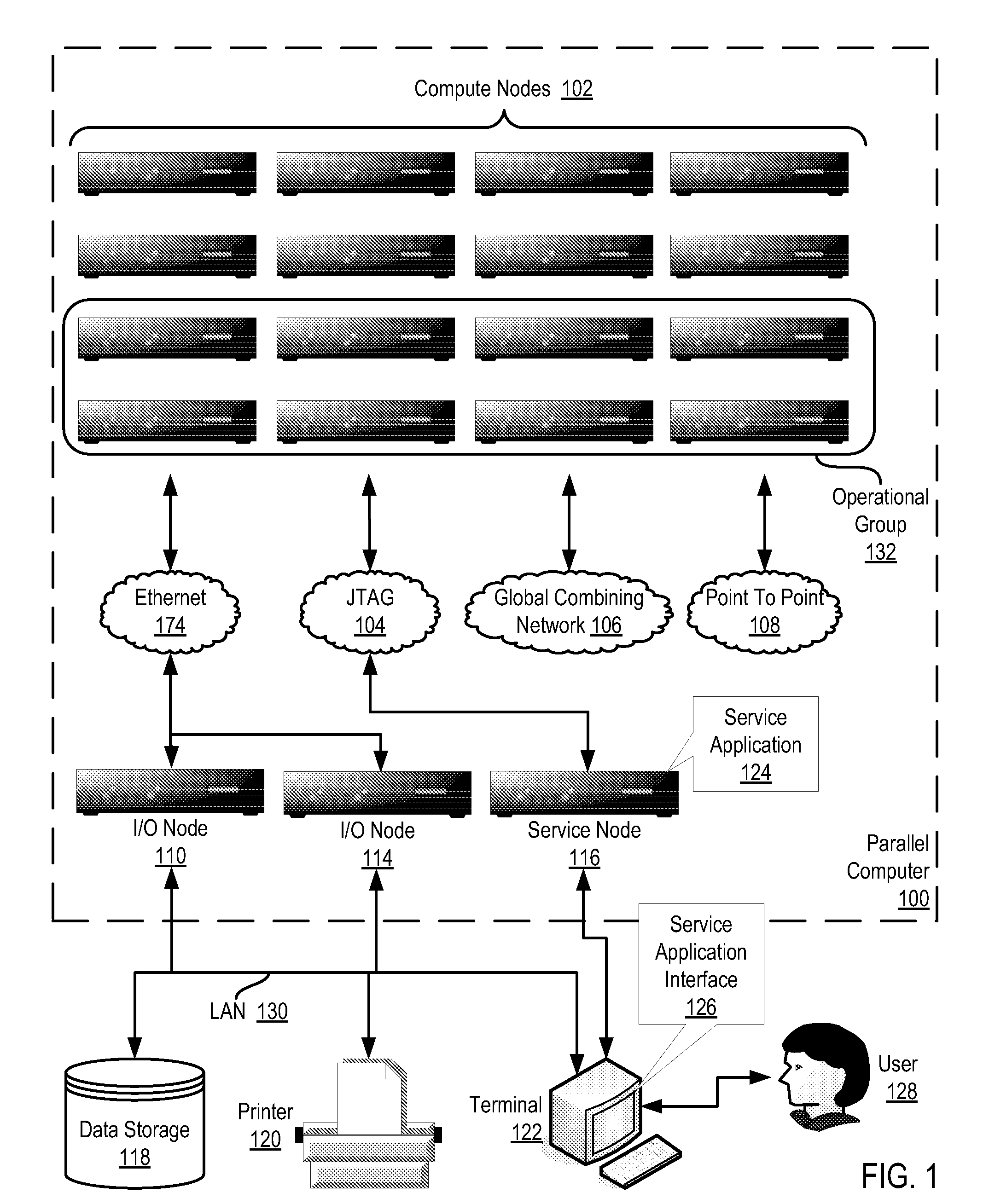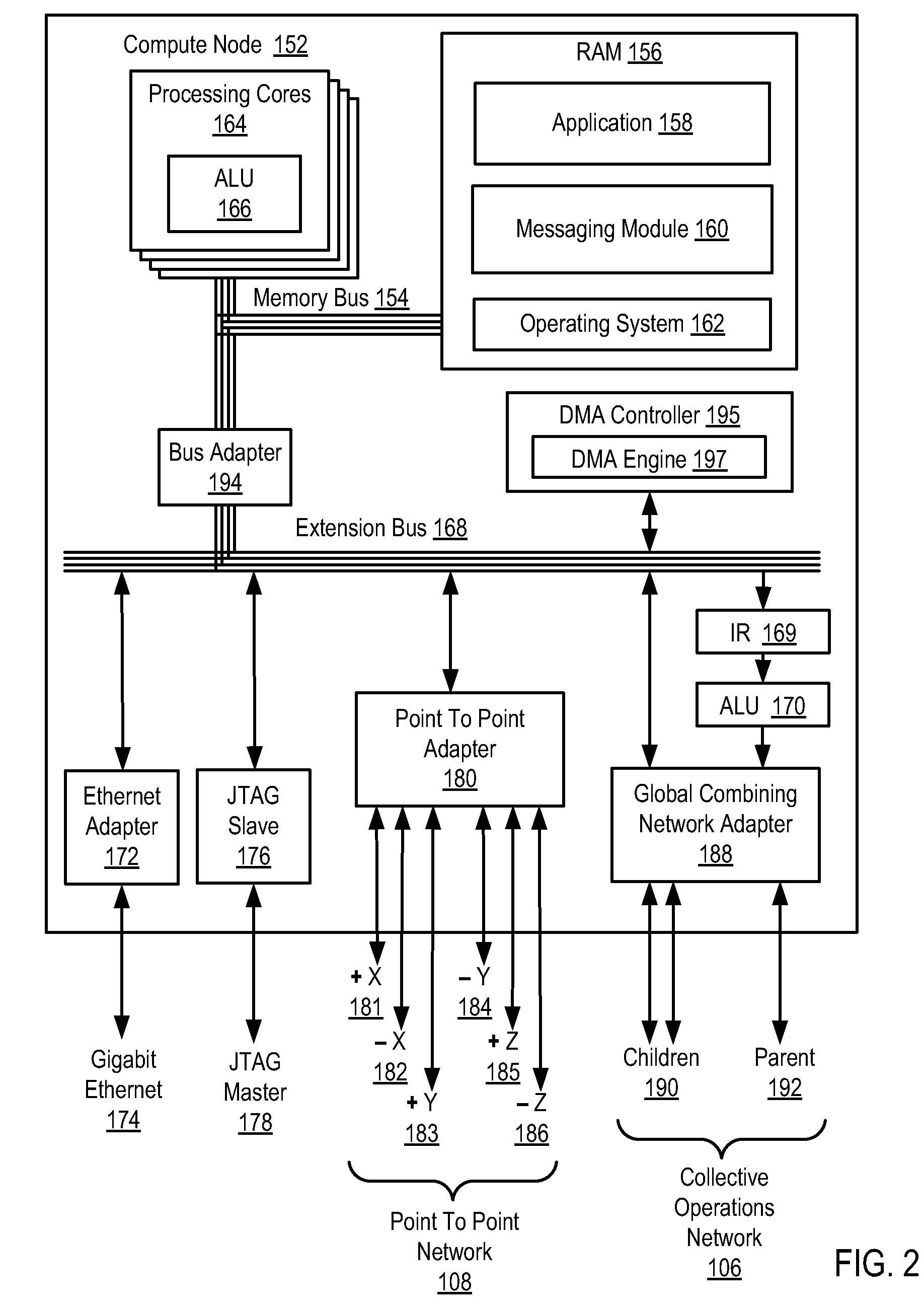Determining When a Set of Compute Nodes Participating in a Barrier Operation on a Parallel Computer are Ready to Exit the Barrier Operation
a technology of compute nodes and parallel computers, applied in the field of data processing, can solve the problems of difficult to construct a computer with a single fast processor and a large number of slow processors with the same throughput, and certain theoretical limits to the potential speed of serial processors
- Summary
- Abstract
- Description
- Claims
- Application Information
AI Technical Summary
Benefits of technology
Problems solved by technology
Method used
Image
Examples
Embodiment Construction
[0025]Exemplary methods, apparatus, and computer program products for determining when a set of compute nodes participating in a barrier operation on a parallel computer are ready to exit the barrier operation according to embodiments of the present invention are described with reference to the accompanying drawings, beginning with FIG. 1. FIG. 1 illustrates an exemplary system for determining when a set of compute nodes participating in a barrier operation on a parallel computer are ready to exit the barrier operation according to embodiments of the present invention. The system of FIG. 1 includes a parallel computer (100), non-volatile memory for the computer in the form of data storage device (118), an output device for the computer in the form of printer (120), and an input / output device for the computer in the form of computer terminal (122). Parallel computer (100) in the example of FIG. 1 includes a plurality of compute nodes (102).
[0026]The compute nodes (102) are coupled fo...
PUM
 Login to View More
Login to View More Abstract
Description
Claims
Application Information
 Login to View More
Login to View More - R&D
- Intellectual Property
- Life Sciences
- Materials
- Tech Scout
- Unparalleled Data Quality
- Higher Quality Content
- 60% Fewer Hallucinations
Browse by: Latest US Patents, China's latest patents, Technical Efficacy Thesaurus, Application Domain, Technology Topic, Popular Technical Reports.
© 2025 PatSnap. All rights reserved.Legal|Privacy policy|Modern Slavery Act Transparency Statement|Sitemap|About US| Contact US: help@patsnap.com



